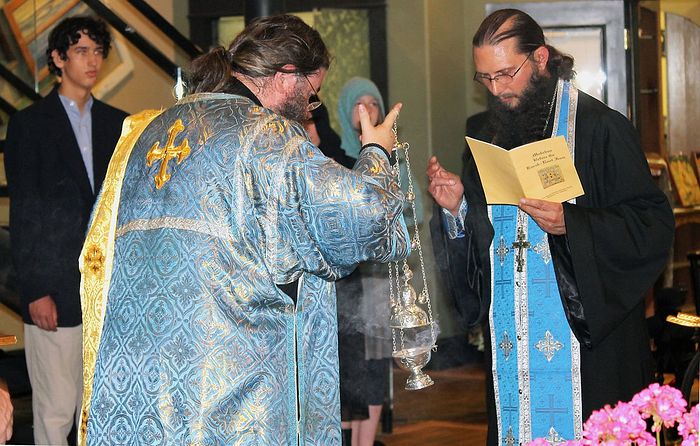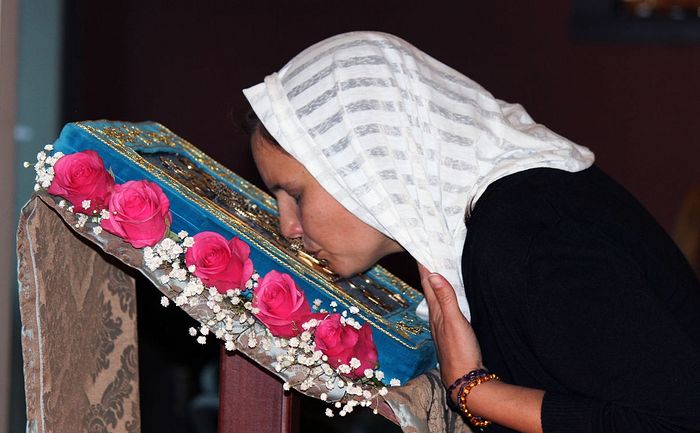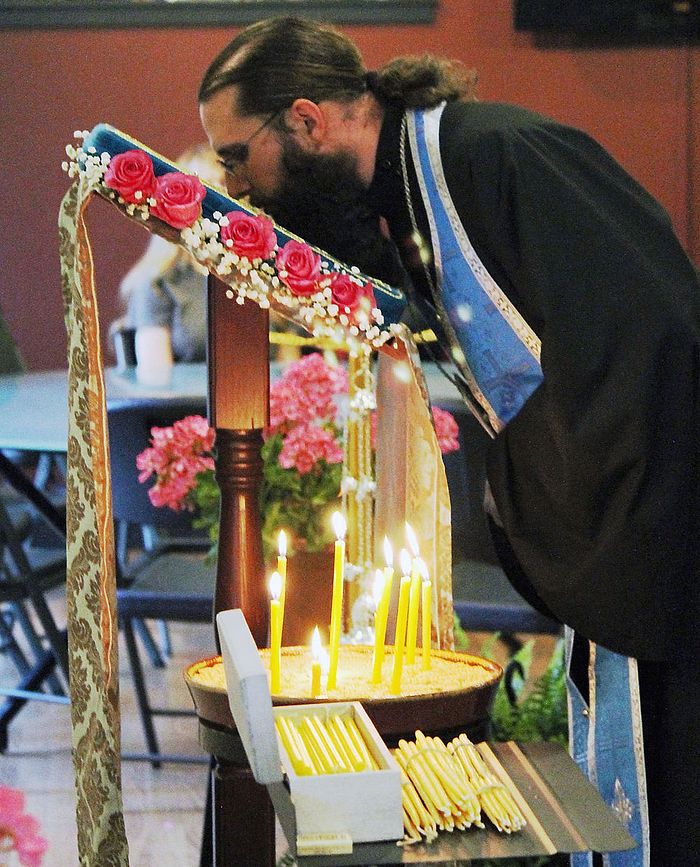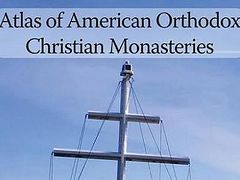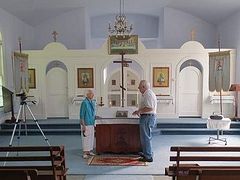Source: Stillwater News Press
May 13, 2016
Although the Orthodox Christian faith is dominant in Russia and the Near East, many in the U.S. aren’t familiar with it or the religious icons that are part of its tradition.
The congregation of Stillwater’s St. Nino Equal-To-The-Apostles Orthodox Christian Church took the opportunity Wednesday to introduce the community to Orthodoxy and give people a change to view and learn about the Kursk Root Icon, a 700-year-old holy relic from Russia.
The members hosted a reception and talk from Rev. Deacon Aaron Taylor of St. Benedict Orthodox Church that explained the significance and meaning of Christian icons, followed by a prayer service.
St. Nino’s congregation practices Russian Orthodoxy. It’s services are similar in structure to Catholic and other Eastern Orthodox services, but portions of the service are in Russian and the music and chants have Russian structures.
It’s a mission church still in the start-up phase, with a core group of four families and about 30 members. Most converted from other Christian denominations, saying they found Russian Orthodoxy after going through a spiritual journey that led them through several faith traditions before they found a place to belong.
Most of the families, and even one the pastors presiding over the service, are not ethnically Russian and seem surprised to have found themselves drawn to an ancient expression of faith with customs that were initially very foreign to them.
It’s exactly that preservation of ancient worship practices that drew people like Pawnee residents Lyn and Beverly Mennem to Orthodoxy.
Beverly said she was raised in the Pentecostal Church, almost the polar opposite of Orthodoxy. The idea that the Orthodox church has preserved the customs of the original Christians and its priests can show a direct line from St. Peter speaks to her.
Like many of the members, she and Lyn said they worked through a number of churches on their way to Orthodoxy.
“We’ve been on a long journey,” Beverly said. “This feels like home.”
The congregation is looking for a place to gather for services but until then, they continue to take turns meeting in their homes for Typika prayer services that don’t require pastors.
During his talk about iconography, Taylor told the small group of congregation members, representatives from other Orthodox churches and members of the public who came to learn about the relic, that venerating or praying before religious icons is very different from worshiping them.
Orthodox Christians believe just as Jesus was a physical manifestation of God, these icons and relics are physical objects that represent and become filled with God’s divine energy and grace.
Calling them “windows to heaven,” Taylor said the honor paid to one of the holy objects flows through to God and any healing or miracle performed in connection with the object comes from God.
Icons are usually paintings of Mary the mother of God, Jesus or saints and there are specific traditional ways to create them that govern everything from the pigments and paints used to the prayers said over them as they’re painted.
Creating an icon is in itself an act of worship, he said.
“It’s sometimes said, ‘They are prayed into existence,’” Taylor said. “The icons are not our gods ...They are venerated in God’s honor.”

